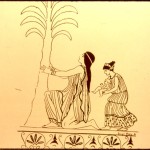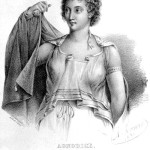Short Cut ~ To read this document its entirety ~ all 35 yearly entries, spanning nearly two hundred years from 1820 to 2014
For readers who prefer to take smaller bits, I will post one section of this material everyday during the month of April. Hope you enjoy!
Day 1: Beginning introduction and quotes from 1820 and 1881
The following historical and contemporary quotes by were made by doctors about midwives over the course of the last 2 centuries on a topic referred they referred to as “the midwife problem”.
Within the medical community there were, and continue to be a very wide difference of opinion on the value (vs. danger) of physiologic management of normal childbirth, and proper role for midwives (as independent practitioners) who provide physiologic childbirth services to healthy women with normal pregnancies.
While physicians fiercely debated the ‘midwife problem’ over the last 2 centuries, midwives and the childbearing women who used their services, were not invited to participate in these important discussions.
I hope these dramatic, conflicting, and frequently disparaging comments among members of the medical profession will provide a helpful perspective to better understand the political tension and on-going controversies between medicine and midwifery.
I describe this as the last and most important UNTOLD story of the 20th century.
For many centuries the controversy within the medical profession over what they called “female practitioners of midwifery” simmered on the back-burner. It finally burst into flames in the US in the early 20th century, and has been going on ever since. This amazingly upsetting story is still a very long way from being over.
1820 ~”Remarks on the Employment of Females as Practitioners in *Midwifery; Published Cummings & Hilliard – Boston, 1820
….where midwifery has been in the hands of women, they have only practiced among the poorer and lower classes of people; the richer .. preferring to employ physicians, and this has been the reason why it has not become universal…
… but if it is again introduced among the rich and influential, it will become fashionable; it will be considered as indelicate and vulgar to employ as physician, and the custom will become general.
It is sufficiently obvious if the employment of female practitioners becomes fashionable, that it will create a fastidious nicety of feeling, which will make it be thought indelicate to suffer the attendance of a physician…
| 5 |
| 8 |
| 9 |
| 7 |
| 86 |
1881 ~ Transaction of the Edinburgh Obstetrical Society“, Vol. 6, Session 1880-81, Edinburgh: A discourse on childbed fever and why nurses who are menstruating are not fit to perform “certain work”
Dr. Keiller: (discussing puerperal fever) “…what he wished to insist on was that the nurses should not live in the Maternity Hospital, but some place near. He thought that they should specially insist on nurses being very cleanly in their persons, especially during their menstruation.”
Dr. Taylor alluded to a correspondence which appeared some years ago in the British Medical Journal, affirming the truth … that a woman during her menstrual period was unfit to manipulate ham in the process of curing, the general experience being that ham so treated did not keep.
The truth was that these popular beliefs were, as a rule, the result of intelligent observation and sagacious inference, and this one at least, was supported by not only amply testimony, but constantly recurring experience.
They were all aware that whilst in some women menstruation was a comparatively local process, in others it was accompanied by characteristic emanations from the rest of the body, and these, proceeding from the hands and reaching the pork in the process of rubbing, could hardly fail to contaminate it.
In the same manner, if these emanation be brought into contact with the raw surfaces which seem to be a necessary contingent of parturition [childbirth], how much more rapidly and certainly will mischief be done! If it affects raw pork, notwithstanding the intervention of salt used in rubbing, how much more rapidly will it be absorbed to the detriment of a living organism.
Hence there is great need for the precautions which Dr. Keiller suggests. Not only should the nurses be separately housed, but the grave question forces itself upon us, “Should a menstruating nurses be allowed to [providing care] in cases of childbirth?”



